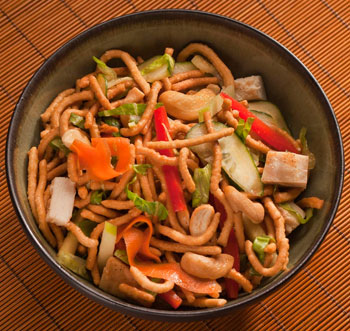Guest Speaker: Gathering around the Kitchen Podium
Saturday, 03 November 2012 22:47
 An English professor expresses his hope for the culinary-arts students he teaches: that they will see how public speaking translates to everyday interactions.
An English professor expresses his hope for the culinary-arts students he teaches: that they will see how public speaking translates to everyday interactions.
By Scott Palmieri, Ph.D.
With dreams of becoming the next Thomas Keller or Alice Waters, freshmen who must enter my Communication Skills class at Johnson & Wales University are often far from enthused. As my colleague, Bill Lenox, reminds me, when they go home for Thanksgiving and are asked by their loved ones to wow the family in the kitchen, they are left to explain that they were behind a desk or podium for most of the fall.
For the university, this is a source of pride, as they receive a well-rounded education. However, how do I, an English professor, relate my subject to future culinarians? After 11 years teaching English courses to culinary and baking-and-pastry students, I have learned to speak their language better while bringing them into my world.

 From a veritable vegetable harvest to liquid luxuries to 24/7 snacking, a noted trend-tracker is among the first to predict what will be hot on menus next year.
From a veritable vegetable harvest to liquid luxuries to 24/7 snacking, a noted trend-tracker is among the first to predict what will be hot on menus next year. When teaching the development of successful children’s menus, emphasize to your students that all five human sensory perceptions (and an arguable sixth) must be put into play.
When teaching the development of successful children’s menus, emphasize to your students that all five human sensory perceptions (and an arguable sixth) must be put into play. For millennia, specific ingredients indigenous to traditional sheep-growing regions have influenced the types of dishes made using lamb, and today, popular techniques cross global frontiers for many cuts to yield eminently flavorful and satisfying dishes.
For millennia, specific ingredients indigenous to traditional sheep-growing regions have influenced the types of dishes made using lamb, and today, popular techniques cross global frontiers for many cuts to yield eminently flavorful and satisfying dishes. The “healthful” food label gets taken to new levels through nationwide cooperation, resulting in up-and-coming heirloom whole-grain breads and leafy breakfast salads and the well-established veggie-burger revolution.
The “healthful” food label gets taken to new levels through nationwide cooperation, resulting in up-and-coming heirloom whole-grain breads and leafy breakfast salads and the well-established veggie-burger revolution.